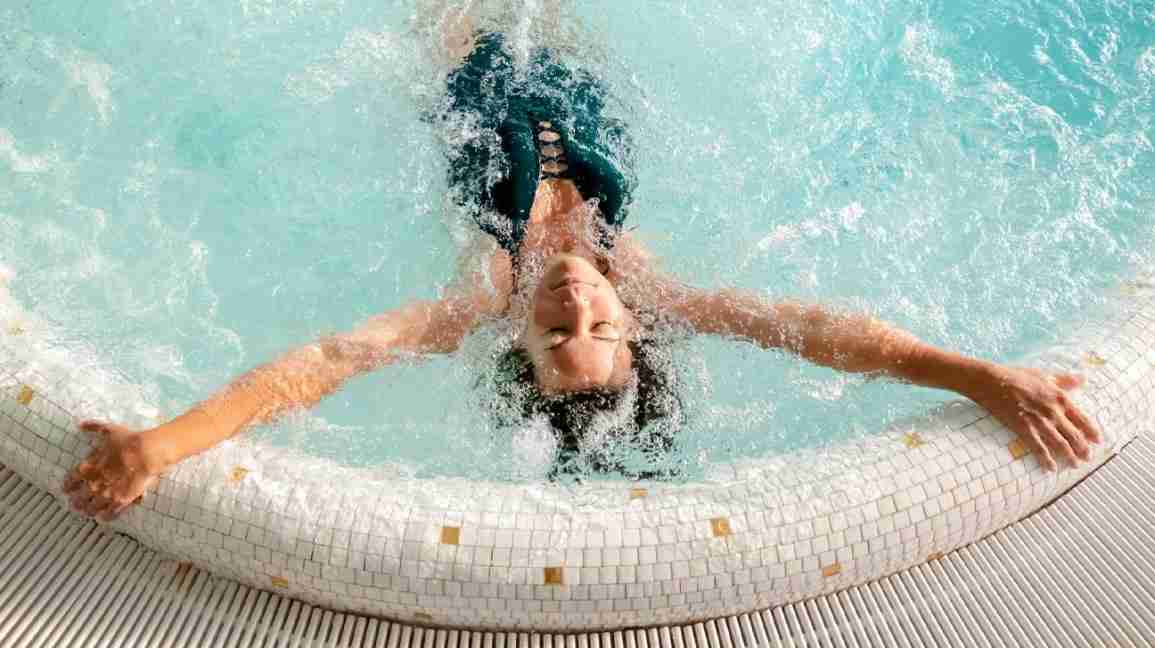Hydromassage is a therapeutic technique involving the use of water and pressurized jets to help massage muscles and other soft tissues in the body. This method also sometimes goes by other names, such as:
- hydrotherapy
- water therapy
- aqua therapy
While
If you’re interested in hydromassage, it’s important to talk to a doctor before seeking this type of therapy, whether it’s in a spa or a home device.
The use of hydrotherapy dates back to ancient Greek and Roman civilizations when the practice primarily focused on bath-style opportunities for relaxing in either hot or cold water. While bathing and exercising in water are both considered hydrotherapeutic techniques, hydromassage has evolved into various modern-day machines.
Traditional hydromassage machines require that you wear a bathing suit while you sit or lie down in warm water. The machines also use hydro-pressurized jets, which may be adjusted based on your preferences.
Another option is a method called dry hydromassage, which uses a table similar to that used in traditional massage therapy. Instead of being immersed in water, the table itself contains a water-filled mattress and jets so that you can feel both the heat and pressure without having to get undressed.
Hydromassage tables also have the added benefit of thermostats to help you control the temperature.
Hydromassage offers many of the same benefits of traditional massage therapy, with the added bonus of water. While more clinical evidence is needed to support the use of this form of therapy for certain medical conditions, the proven benefits include:
Relaxation and improved mood
Perhaps one of the most established benefits of massage therapy is an overall sense of relaxation. In some cases, it may even help to alleviate stress and anxiety.
Pain relief
Many other studies have shown hydrotherapy’s effects on pain. Massage therapy itself has also been established as a complementary method of treating pain in the knees, lower back, neck, and shoulders. However, more studies are needed to assess the safety and efficacy of hydromassage for other forms of chronic pain, such as fibromyalgia and headaches.
Post-exercise relief
Unless recommended by a doctor, don’t use hydromassage if you sustain any joint injuries or fractured bones.
Increased circulation
Another potential benefit of massage therapy is increased circulation.
Despite the potential benefits, hydromassage isn’t safe for everyone. It’s not recommended for those who are pregnant, people who have high blood pressure (hypertension), and those with bleeding disorders.
Hydromassage may cause:
- burns from water that’s too hot
- worsening skin rashes if you have eczema or any other inflammatory skin condition
- bruises
- nerve injuries
- fractures, particularly in older people or those with osteoporosis
- blood clot (rare)
Hydromassage services may be offered at spas, gyms, and shopping mall kiosks. It may also be just one of the many types of massages offered at massage parlors.
You can get a dry hydromassage in either chair or table form. While both can target the entire body, the upright position of a massage chair may be preferable if you want to target the head, neck, or upper back. A table may be better if you’re more comfortable lying down for your massage sessions.
If you prefer traditional hydrotherapy while immersed in water, then you might consider hydromassage in a tub. You may be able to find a tub at a spa or physical therapy center.
You can also find all of these options to purchase in your home, but it’s important to keep in mind that you may still need to work with a professional massage therapist or physical therapist to help treat any ongoing medical concerns.
The cost of hydromassage depends on where you’re receiving treatment as well as what you’re using it for.
Generally speaking, hydromassage isn’t covered by medical insurance. There may be an exception if you’re receiving traditional hydrotherapy sessions from a physical therapist or a rehabilitation center for the treatment of a medical condition.
Contact your insurance company to get an idea of what your out-of-pocket costs will look like. If your carrier covers hydromassage, you might need to visit a therapist who is in-network.
Some gyms and fitness clubs offer the use of hydromassage chairs and tables at an additional cost per month to your membership fees. The average cost for the hydromassage alone is $10 to $15 a month.
At-home hydromassage table costs can vary, but the average is $3,000. This doesn’t include accessories and maintenance.
Modern hydromassage most often uses machines to help alleviate pain with the use of warm water and pressurized jets.
While the benefits of a massage are wide-ranging, this method isn’t right for everyone. It’s important to talk to a doctor before undergoing a hydromassage, especially if you have any underlying medical conditions.



